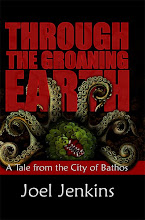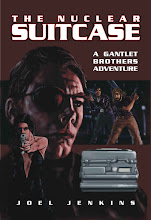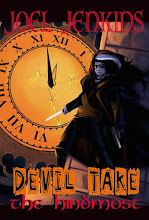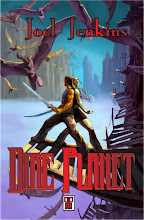Wednesday, November 20, 2013
The Art of Action Fiction: Action
One thing I quite enjoy reading is a great action sequence. However, action sequences seem easier to write than they really are. There are a number of ways to kill an action sequence, and here are a few of the possibilities:
1) The protagonist is invincible: Maybe your character is the baddest, toughest son of a gun to ever walk the earth. If the reader doesn't think that perhaps the protagonist is actually in some danger, there becomes no point to the action sequence. Be sure to inject drama by emphasizing the danger and the difficulty. If the character must do a back flip of a high building onto the arm of a crane in order to avoid a hail of bullets, don't just state that she accomplishes this task. State the danger of the maneuver due to the high winds and the slick surface of the crane and how if she misses she will end up splattered on the pavement. Then have her barely succeed at her risky maneuver. This is a constant problem that writers of Superman tv shows, comics and movies have to deal with. Bullets bounce of his chest, for crying out loud, how is the reader supposed to be worried about Superman's welfare? So the writers give him an Achilles heel (kryptonite) or they have him face foes with powers equal to his own, or they put other weaker individuals (Lois Lane and Jimmy Olsen) in harm's way so the reader will wonder if Superman can save them in time.
Which brings us to 2)No One Ever Dies: I once had a woman tell me that much fiction bored her because she already knew the final outcome would result in the hero riding off into the sunset. When I write I don't ever rule out killing the main character if that's where the story leads me. Authors more successful than I have pointed out that this is a huge mistake, since you are also killing off your chance at a franchise or series. There is some truth to this, and I may have figuratively shot myself in the foot more than once. However, killing a character doesn't entirely destroy the option of writing future stories in a series. It is possible to continue by making periphery characters the focus or by writing stories that occur prior to the death of that character.
2) Trust me this what happens: This is a particular weakness of TV shows. I recall watching one spy series, which I enjoyed, where the central character pulls out a large gun (which the audience has never seen before and has no knowledge of) and shoots an oncoming car through the radiator. At this point the engine explodes in flame and the car screeches to a halt. I was left scratching my head. Why would shooting a car through the radiator cause it to explode into flame? Even if she were shooting an incendiary round this wouldn't happen. Perhaps she had been given some experimental super explosive bullets by the spy agency she worked for, but if that was the case it was never mentioned. Maybe, I'm the exception, but I like to know the how and why of weapons. I find it interesting that some medieval warriors left the edges of their shields without any metal, because the wood might catch a descending weapon and keep it stuck, giving them the opportunity to slay their opponent. I like to know that polearms (an axe or pick with a long handle) were used because the leverage gave them a chance of penetrating plate armor. I'm interested to know how a stun gun creates a build up of lactic acid in the muscle that makes the target incapable of moving. I like to know that the AK-47 is less accurate than the M-16 but it has a more powerful round. Details like this intrigue me, and I imagine that they might intrigue the reader as well. Most of this sort of information can be boiled down to a sentence or two, so that it doesn't slow down the action, but rather it informs the action and helps the reader understand why the combat is unfolding in the manner it is.
3) Lack of Spacial Recognition: It may be beneficial for some authors to have fired a gun, been in a fistfight or two, wrestled, or simulated sword combat with padded weapons. This helps the author to understand a logical progression of a skirmish. A character shouldn't be backflipping away from a punch and then delivering an uppercut, because if they've backflipped away they are no longer in a position to execute that uppercut. Nor should they easily be punching their sword-carrying enemy, because reach is a huge factor, and anyone attempting to punch a man with a sword will likely get their arm chopped off or their head split open.
4)Lack of Vivid Verbs: A combat scene should be dynamic and awe-inspiring. Why settle for a mere hit when the character can crush, pummel, slam, hammer, and pound? Bullets can slice, tear, rip, pierce, lance, glance and ricochet, and your verbiage can cause the reader to tremble, quake, and quiver!
Subscribe to:
Post Comments (Atom)





















No comments:
Post a Comment